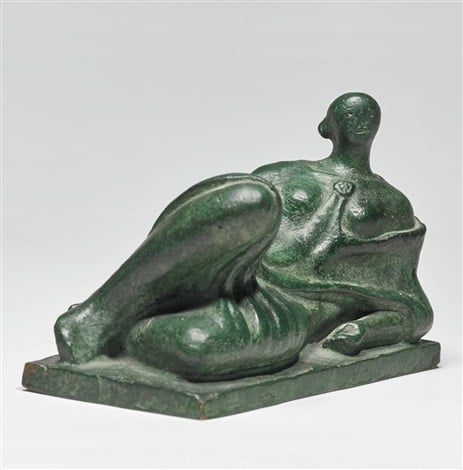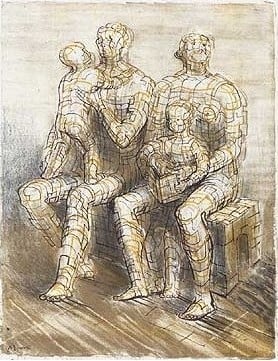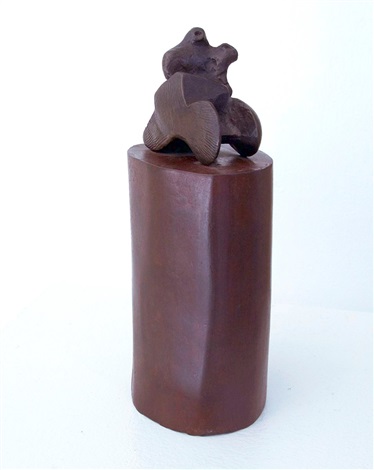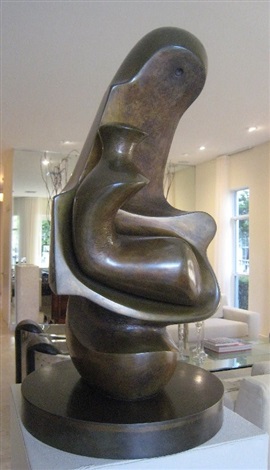People
Why Do Collectors Still Love The Visceral Sculpture of Henry Moore?
His curved, reclining figures can be found all over the world.

His curved, reclining figures can be found all over the world.

Amah-Rose Abrams

Henry Moore is one of the world’s best-known and best-loved sculptors. His curved, reclining figures can be seen in public parks and spaces all over the world, and his philanthropic legacy lives on in the foundation he left behind.
His work, both captivating and surreal, can also currently be seen at Beaux Arts in London in an exhibition titled “Homo Sapiens,” on view through January 23, 2016, and in “SKUPTUR 1” at Galerie Ludorff in Düsseldorf through January 27, 2016.
Born in 1898 in West Yorkshire in the North of England, Moore grew up as the seventh of eight children whose father worked in a coal mine. Money was often scarce, yet Moore’s father insisted all his children gain a formal education to avoid a life working in the mines.
While still in school, Moore’s talent was quickly spotted by his art teacher, who suggested he apply for a scholarship. This allowed him to go to art college, where he became determined to pursue a career as an artist.

Henry Moore Family Group (1950)
Photo: courtesy Dominic Guerrini Fine Art
His parents, however, viewed sculpture as mere manual labor. After completing his initial training, he began working as teacher at the college where he had intended to study. As soon as Moore turned 18, he volunteered for service in the ongoing First World War, and served until he was injured in the line of duty.
In 1919, after the war had ended, Moore returned to studying art at the University of Leeds—funded by an army grant—where he met fellow sculptor Barbara Hepworth. The two artists went on to be great friends and, at times, rivals. There was very little sculpture being made in Britain at the time, so Moore had the sculpture department and the sculpture teacher almost entirely to himself.
While Moore initially made sculpture in the Victorian tradition—classical and figurative—he had held an interest in medieval sculpture since boyhood, and began to take notice of the “Primitive” movement. Inspired by artists like Constantin Brancusi, Jacob Epstein, and Frank Dobson, Moore’s style began to develop, and change.

Henry Moore Mother and Child: Wheels (1962)
Hollis Taggart Galleries
In 1921, he gained a scholarship for the Royal College of Art in London, where he began frequenting the British Museum to study Aztec, African, and early Greek sculpture. Through his interest in early sculpture, Moore began to develop his idea of “truth to materials.” Rather than making casts or bronzes, he began working more directly with his materials, with the firm belief that a sculptor should respect the inherent properties of stone and wood, and allow them to shine through.
In 1924, Moore and his wife Irina—whom he met while teaching at the Royal College—were living in Hampstead, and enjoying life as part of the London art scene. Among their friends were Barbara Hepworth and the writer and poet Stephen Spender.
By 1928, Moore had received his first public commission—the first of many to come—to create a sculpture in the foyer of the head office of London Transport. He also exhibited drawings at the Warren Gallery that year. By the early 1930s, Moore was exhibiting internationally.

Henry Moore Working Model for Mother and Child: Hood (1982)
Photo: Evelyn Aimis Fine Art
When Word War II broke out in 1939, Moore tried to enlist along with fellow artist Graham Sutherland, with the goal of making precision military equipment. The job was oversubscribed, meaning that he then became a war artist, making drawings of people living in London during the war. Moore has said that he was deeply influenced by the wartime experience of living in London during the Blitz. While hiding from bombings in the London Underground, he became fascinated by the sleeping forms of the people who took shelter there.
“I would go around the corner and scribble on an envelope, ‘remember two people sharing a cream blanket,’ this would be enough for the next day to bring back the scene, and then I’d make a drawing of it,” he told the BBC Home Service in 1966.
Some of Moore’s most-loved works were made during this time, when he used to go into the tube and take note of what he saw. He would write down his observations, and then go home and make drawings. He would later draw people working down mines in the same way.
He resumed making sculpture after the war, and in 1946 held his first ever major retrospective at The Museum of Modern Art, or MoMA in New York. From then on, his career followed an upwards trajectory until he was known as “the most famous sculptor in the world.”
His legacy lives on, not only in his art, but also through the charitable Henry Moore Foundation, to which the artist donated most of his money and his home and grounds at Perry Green, in England.